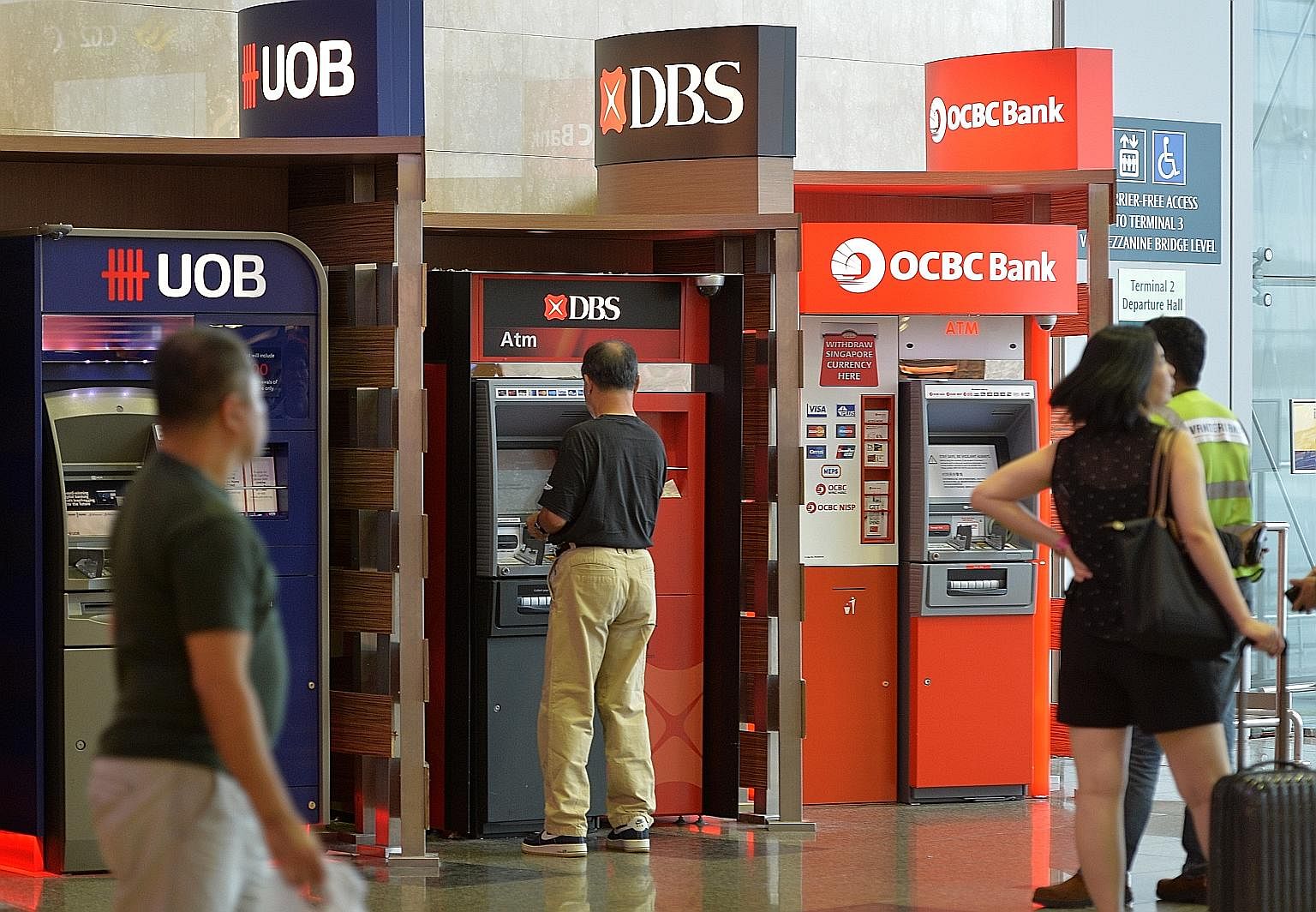Sell in May and go away? Not a chance this year, going by the frenzied manner in which fund managers picked up bank shares last month.
Data from the Singapore Exchange (SGX) shows that in May, institutional investors snapped up $834.3 million worth of financial stocks. This brought their total purchases in bank counters to an eye-popping $2.37 billion since November.
In so doing, they propelled bank shares sharply higher, with DBS Group Holdings and OCBC Bank each gaining about 20 per cent since January. United Overseas Bank is up 15.4 per cent in the same period. The three banks' gains have, in turn, helped to drive up the Straits Times Index (STI) by 9.6 per cent since the start of the year. The three banks contributed about half of the STI's gains.
The improved sentiment has also given a fillip to market trading. Last month, the daily average value of shares traded rose 23 per cent to $1.261 billion over the same period last year.
These are impressive statistics and attest to the important role fund managers can play in stirring up trading activity on the local stock market.
But the snag is that unless a retail investor also has exposure to financial counters, the likelihood is that he would not have enjoyed much of the stock market rally, as reflected by the gains made in the STI.
What is also interesting to note is that those retail investors who do have exposure are busily taking profit as bank shares rally.
SGX data shows that retail investors have been net sellers of bank stocks for much of this year. The net value of their weekly sales is often roughly equivalent to the purchases picked up by fund managers.

This flags an interesting paradox - while institutional funds are bullish on banks, retail investors have adopted a cautious stance and taken profit on their positions as prices surge.
In hindsight, retail investors seem to have taken the sensible approach. Bank shares have rallied so much this year that any further upside would seem limited for now.
There is also a recent precedent to take note of. In the first four months of 2015, investors had been similarly exuberant over bank counters, with their purchases pushing the STI to a then eight-year high of 3,487.39 in April that year.
But subsequent worries over slowing economic growth and rising bad debts in the marine and offshore sector led a stampede out of bank stocks, which left the STI down 14 per cent for the year.
Bank stocks then remained in the doldrums until November last year when financial institutions worldwide were re-rated positively, following Mr Donald Trump's victory in the United States presidential election, which spurred hopes of tax cuts and lighter financial regulations in the US.
So one question to ask is whether there is a danger of recent history repeating itself - a concern which appears to have gripped retail investors as they switch out of bank shares even as their prices shoot up.
If there is any danger lurking on the horizon, the first-quarter results released by the banks fail to flag them.
In fact, all three lenders delivered results that beat analysts' expectations, with their respective management attributing the strong performance to a benign economic environment and growth in businesses such as wealth management.
Even provisions for bad loans to the troubled oil and gas sector - which spooked the sector last year - turned out to be a smaller problem than originally anticipated.
All three banks have indicated that the larger troubled loans have already been recognised as non-performing loans. The bad debt situation in the oil and gas sector is also believed to have stabilised.
What is more, any further interest-rate hikes by the US central bank may turn out to be a boon for the local lenders, given the manner in which local interest rates track the US market.
All the three lenders are net lenders with more deposits than loans. That means that any rise in interest rates will lead to an improvement in their net interest margins - the spread which they earn on their loans - and this will give a boost to their bottom line.
Against this rosy backdrop, however, there is the worry that as local interest rates creep up, it may cause stress among home-owners servicing their mortgages.
But so far, there is little cause for worry. As Citi Research analyst Robert Kong noted in a report last month, four years of TDSR (total debt servicing ratio), which restricts the sum a property buyer can borrow as a percentage of gross income, has helped to curb speculation while household incomes have crept up.
As for small and medium-sized enterprises, the other group of borrowers likely to be hurt by higher interest rates, banks have not reported any "systemic uptrends" in this segment of their loan portfolios and any rise in non-performing loans would still be presumably covered within the current provisions for bad debts made by the banks.
Still, while the home front may appear tranquil, there is one worry further afield worth flagging - the recent beating taken by US banking giants in their share prices.
Even though US stock indexes such as the Dow Jones Industrial Average and Nasdaq Composite have been hitting record high levels, share prices of some huge US lenders, such as JPMorgan Chase and Goldman Sachs, have slipped sharply from their recent highs.
These lenders had been the biggest beneficiaries of the stock rally after Mr Trump's victory, as investors looked forward to a heady brew of higher interest rates, lower taxes and lighter regulations.
But some of those anticipated changes now look less certain to be delivered as Mr Trump's setback over healthcare reforms - and his deepening political problems - cast a pall over his ability to implement other promised reforms.
The Financial Times noted that on the US lenders' wish list had been a move to repeal a debit card interchange fee which had reduced banking industry revenues by more than US$9 billion (S$12.5 billion) a year in the US since it was introduced in 2010.
Yet, even on this move, it observed that Republican lawmakers have been unable to swing the votes their way. That makes the banks look to the next item on their wish lists with some trepidation, it added.
You may think that the inability of US lenders to lighten up on some arcane regulations on their home front has nothing to do with the rest of the world. But in an intimately connected world such as ours, the big worry is whether the rally in local bank shares will suffer any collateral fallout if US lenders continue to falter.
A broader question to ask is whether our stock market is over-reliant on the three local banks' capacity to stir up interest among fund managers. That is the big dilemma confronting the local bourse as it battles for attention with other major stock markets for the investor dollar.

